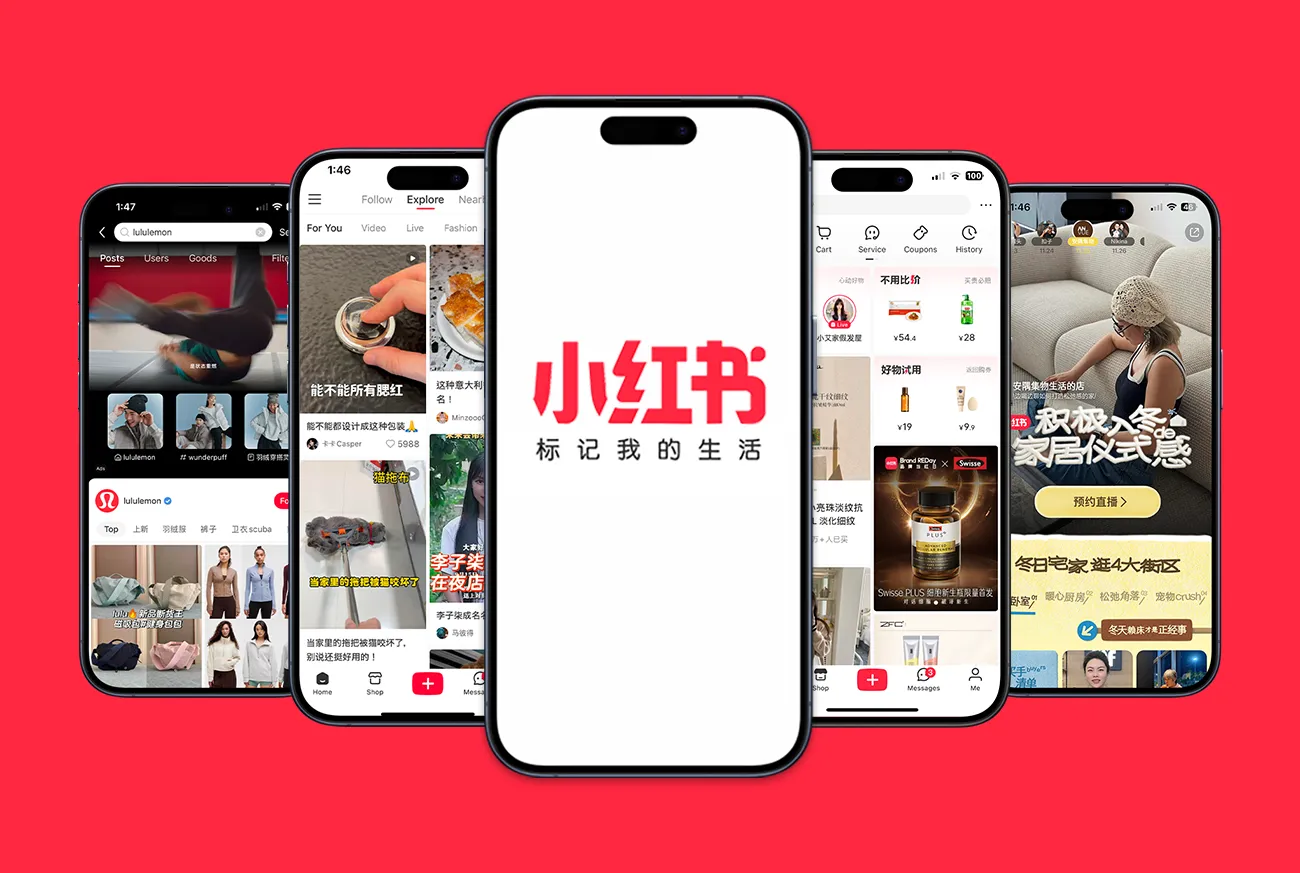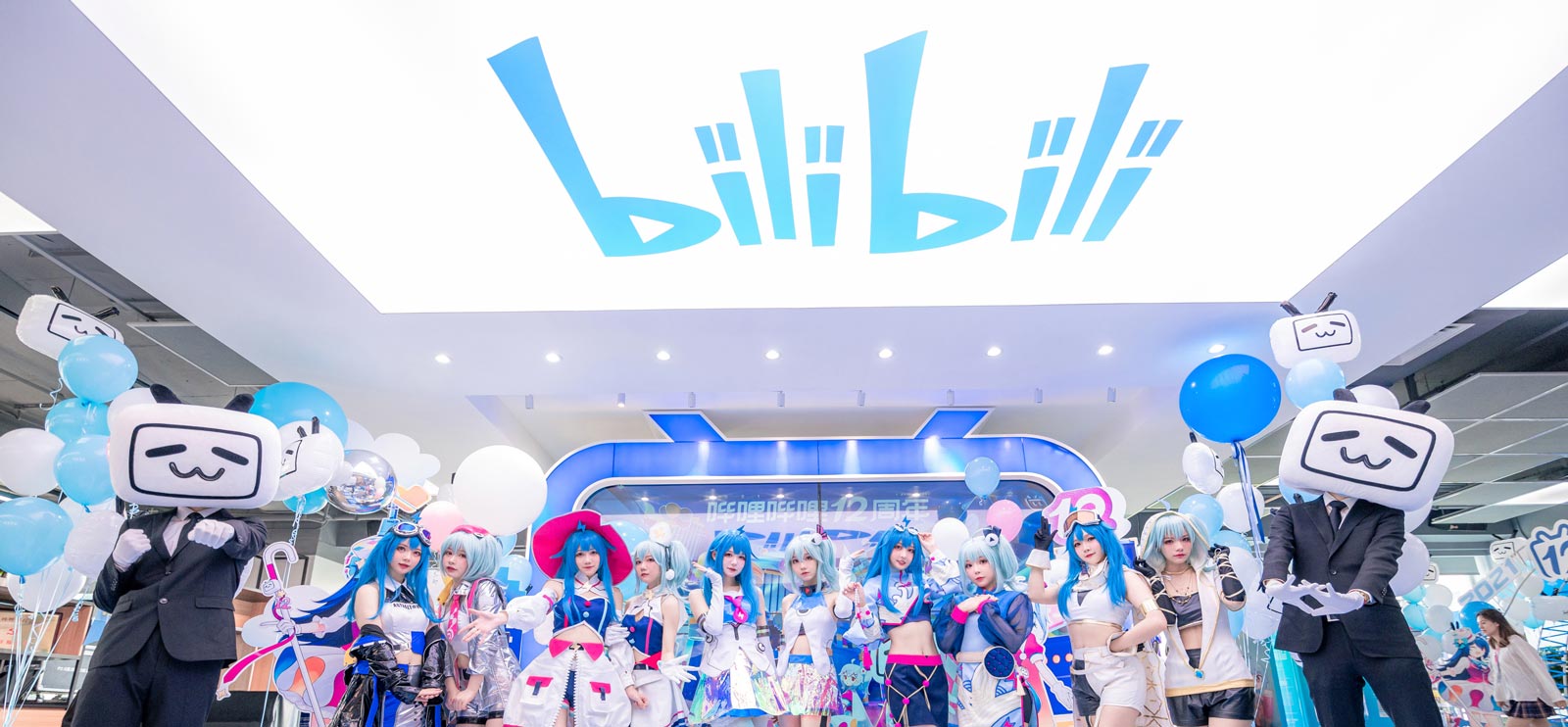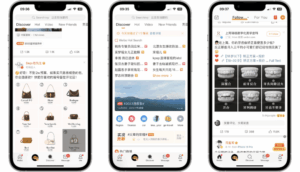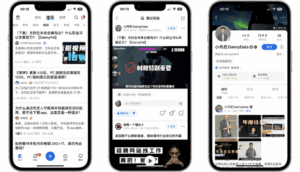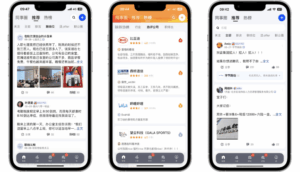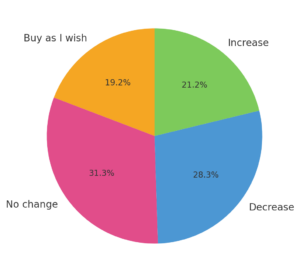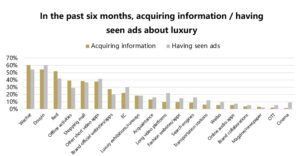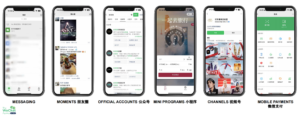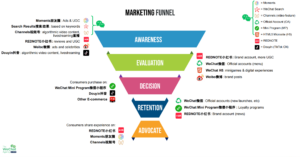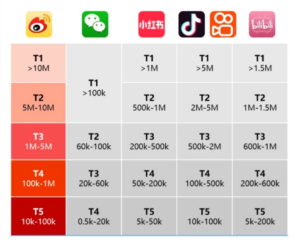WeChat is one of the most influential digital platforms in the world. Developed by Tencent, it functions as a messaging tool, social network, digital wallet, search engine, business hub, and marketing platform all in one. For users in China, life without WeChat is almost impossible. For international users and businesses, understanding what WeChat is used for is essential to interacting with Chinese consumers and entering the China market.
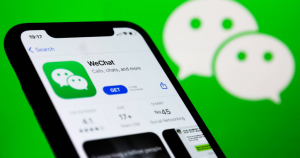
This guide explains what WeChat is, how it works, its key features, use cases for individuals and businesses, and why it is considered China’s digital cornerstone. Whether you are traveling to China, running a business, or studying global digital ecosystems—understanding WeChat is crucial.
What Is WeChat? Definition, Origins, and Role Today
WeChat (Weixin in mainland China) is a multi-functional super-app that combines communication, payment, social media, mini-app integration, and digital services. Launched in 2011 by Tencent, it started as a simple messaging app and evolved into a full digital ecosystem with over 1.2 billion active users worldwide.
WeChat’s Evolution and Milestones
WeChat’s growth reflects shifting consumer behavior in China. Key stages include:
- 2011 – Launch as a messaging app
- 2012 – Voice messaging feature boosts adoption
- 2013 – Introduction of Moments (social feed)
- 2014 – Launch of Official Accounts and WeChat Pay
- 2017 – Mini Programs officially unveiled
- 2022 – Reaches over 1.2 billion users
- 2023–2025 – WeChat Channels pushes short videos and live commerce
Weixin vs. WeChat
- Weixin = Mainland China version (operates under Chinese regulations)
- WeChat = International version (limited functions but same core experience)
This separation allows Tencent to comply with regional laws, particularly regarding data, payment, and content moderation.
Why WeChat Matters Globally
WeChat is not just an app, it acts as the digital infrastructure of daily life in China. From paying utility bills to booking doctor’s appointments, brands, businesses, and individuals rely on it for work, communication, transactions, travel, and services. For international companies entering China, WeChat is a gateway to consumer interaction.
What Is WeChat Used For? Core Features and Ecosystem
WeChat’s strength lies in its versatility. It combines multiple apps into one seamless platform:
Messaging
WeChat began as a messaging app and still functions as China’s default communication tool. Users can send text, voice notes, video messages, files, and location pins—individually or in group chats (up to 500 members). Voice messaging is widely used due to its speed and convenience. Features such as QR code contact exchange and People Nearby make offline interactions instantly digitizable. Over time, messaging on WeChat has replaced SMS, email, and even traditional phone calls in China.
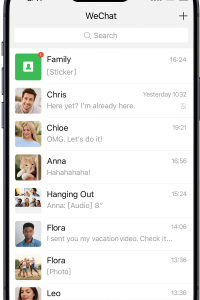
Moments
Moments is WeChat’s social feed and one of its most frequently used features. It functions as a semi-private timeline where users share photos, videos, personal updates, and links. Content visibility follows a mutual-contacts rule—only friends who know each other can see one another’s comments—making Moments feel personal and controlled compared to public platforms like Instagram or Facebook. Brands can also promote content via WeChat Ads inside Moments to drive traffic, leads, and visibility.
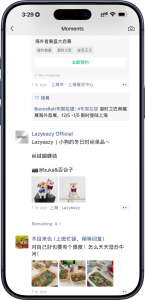
Official Accounts
Official Accounts are WeChat’s equivalent of brand pages or newsletters. They allow businesses, institutions, and creators to publish content, promote campaigns, provide customer service, and manage CRM. There are two main types:
- Subscription Accounts: Ideal for frequent content updates and brand storytelling.
- Service Accounts: Advanced features, APIs, customer service, and WeChat Pay integration.
For many Chinese users, interacting with a brand through an Official Account is more common than visiting its website.
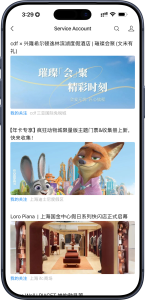
WeChat Mini Programs
Mini Programs are lightweight apps built inside WeChat. They require no downloads and launch instantly, which makes them ideal for quick services such as:
- E-commerce & loyalty programs
- Train and hotel bookings
- Food delivery & takeaway
- Games and interactive campaigns
- Event check-ins & QR code activations
- Virtual storefronts for retail brands
They contribute to WeChat’s closed-loop ecosystem, where users can browse, engage, purchase, and receive post-sales service—all without leaving the app.

WeChat Channels
WeChat Channels is an algorithmic short-video feed, similar to TikTok and Douyin. It allows individuals and brands to publish vertical videos, host livestreams, and attach links to e-commerce stores or Mini Programs. This feature has become WeChat’s main tool to compete with short-video platforms and supports:
- Product demos & styling videos
- Livestream shopping
- Influencer collaborations (KOL/KOC)
- Educational content & professional showcases
- Trending audio formats and visual templates
For marketers, Channels brings top-of-funnel visibility, which can drive sales via WeChat Pay, group chats, or Mini Programs—all within the same ecosystem.
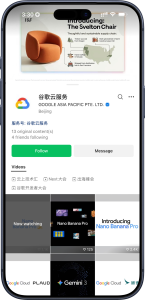
AI-Powered WeChat Search
WeChat Search has evolved into a full internal search engine, now powered by AI and natural-language processing (NLP). Users don’t just get results from chat history, they can search across the entire WeChat ecosystem:
What WeChat Search can index:
- Official Account articles
- Mini Programs and services
- Channels videos and livestreams
- Group chat mentions
- Brand services and product pages
- Nearby results (restaurants, shops, attractions)
With AI integration, WeChat Search now supports:
- Suggested queries based on user intent
- Image-based visual search
- Personalized result ranking based on past behavior
- Smart indexing of trending conversations
This shift marks the beginning of GEO (Generative Engine Optimization), a future where brands must optimize for WeChat’s AI search layers, not just Baidu or Google.

WeChat Pay & Mobile Payments
WeChat Pay is a digital wallet that has replaced cash and bank cards across China. It enables:
- QR code payments in physical stores
- Peer-to-peer transfers
- Bill payments & mobile phone credits
- Subscription services & recurring payments
- Festival red envelopes (Hongbao)
For merchants, integrating WeChat Pay means instant access to a massive consumer base. For users, it simplifies daily life—from grocery shopping to doctor appointments. Foreign users can activate WeChat Pay with a verified account and supported bank card, making it increasingly relevant for international visitors and China-bound travellers.

How to Use WeChat in Your Marketing Strategy?
WeChat is not just a messaging app. It is the digital infrastructure of China, combining social media, search, payments, e-commerce, content publishing, and customer service into one platform.
As a result, WeChat marketing is not about posting content only. It is about building a full customer journey, from awareness to conversion, all within one app.
Brands use WeChat to:
- Communicate directly with target consumers
- Publish content and educate the market
- Provide customer service
- Activate loyalty and CRM programs
- Sell products via Mini Programs and WeChat Pay
- Drive traffic from Channels and Moments
- Convert users during livestreams
WeChat marketing is ecosystem-based rather than feed-based. Success depends on choosing the right account type, building valuable content, analyzing competitors, and creating a conversion strategy inside WeChat’s closed environment.
Competitor Audit & Gap Analysis
Before launching, brands must understand:
- What types of accounts competitors use
- Posting frequency and formats
- Mini Program integration
- Use of Channels or livestreaming
- Level of audience engagement and retention
Gap Analysis helps identify opportunities and content angles that competitors have not exploited yet.
Identify Your Target Audience in China
Audience segmentation on WeChat is different from Western platforms. External buyer personas should be translated into WeChat behavior:
- What keywords do they search?
- What Mini Programs do they use?
- What content do they save or share?
- Which competitor accounts do they follow?
- Do they prefer private groups or public feeds?
Different audiences require different communication styles, especially in B2B vs. B2C contexts.
B2C Audiences – Lifestyle Driven
B2C users respond best to content that feels relatable and visual. They engage when a product is shown in real-life scenarios and when the tone feels personal. Short formats work well, especially videos that show usage, benefits, or results.
What works for B2C:
- Short-form videos and lifestyle moments
- Tutorials, before/after results, product reviews
- Personal tone and visual storytelling
- Easy calls-to-action such as “Try it” or “Shop now”
- Best tools: Channels, Moments ads, KOC/KOL content, Mini Program stores
The goal is simple: spark interest quickly and make conversion easy.

B2B Audiences – Solution Driven
B2B users seek clarity, expertise, and proof. They want to understand how a product solves a problem or improves efficiency. Credibility matters more than aesthetics, and content often needs to explain the process behind the solution.
What works for B2B:
- Case studies and use scenarios
- Data points, results, and workflow explanations
- Professional tone and structured messaging
- Educational livestreams or demos via Mini Programs
- Best tools: Service Accounts, gated content, QR-based lead collection
The goal is to build trust and support sales discussions—not push for instant conversion.

Knowing whether you are speaking to a lifestyle-driven user or a solution-driven user helps define tone, format, and conversion paths across the entire WeChat ecosystem.
Define Your Content Strategy
A strategic content plan on WeChat should clarify:
- Purpose of content (education, credibility, conversion)
- Formats (long-form, infographic, report, short video, tutorial)
- Content pillars (product, brand story, industry trends, case study, tutorial)
- Conversion mechanism (QR code, Mini Program, landing page, WeChat Pay)
WeChat users expect informative and proof-based content. It is not a viral-content platform — authority and expertise matter more.
Distribution & Amplification
48-Hour Window
A WeChat post is indexed for 48 hours. This period is critical for visibility. Internal resharing, user tagging, and promotion within group chats increase engagement and ranking.
Organic Distribution
- Sharing in relevant WeChat groups
- Reposting on Moments (via users or KOCs)
- SEO via WeChat Search keywords
- Linking to Mini Programs or website
Paid Promotion
- Moments ads
- Channels ads (video format)
- Search Ads via keywords
- KOL collaborations
- Livestream boosting

Paid and organic should work together. Users often research the brand inside WeChat before making decisions.
Why WeChat Marketing Matters
WeChat is not just a platform. It is where Chinese consumers:
- search for brands
- read reviews
- compare solutions
- book services
- make payments
- contact support
A website alone is not enough. In China, brands need WeChat presence to be considered trustworthy and local.
How Does WeChat Work? Platforms, Privacy, and Security
WeChat operates across Android, iOS, HarmonyOS, web, and desktop, with mobile being the most feature-rich version. Users create accounts using a phone number and verify identity through SMS and QR code authentication. Weixin (mainland China version) and WeChat (international version) follow different data regulations to comply with local requirements, which is why certain features may vary depending on user location.
Privacy & Data Framework
WeChat follows Chinese data protection laws, which influence how information is stored and moderated. Content may be filtered based on regional guidelines, and compliance measures differ between markets. This dual-system approach allows Tencent to operate successfully both inside and outside China while meeting regulatory expectations.
Security Measures
WeChat applies account protection tools such as real-name verification, device authentication, login alerts, and reporting mechanisms for suspicious activity. The platform continues to improve transparency around data usage and offers users access to privacy settings, permission control, and message visibility preferences.
Regulatory Context
Like other major digital platforms, WeChat has faced reviews and regulatory scrutiny from governments in different regions. This is common for global tech companies and reflects growing global attention on data privacy. Instead of limiting growth, such reviews have led to improved safeguards and stronger compliance practices across WeChat’s ecosystem.
FAQ: What Is WeChat and How Is It Used?
What is WeChat and why is it called a ‘super-app’?
Because it integrates messaging, payments, social media, apps, and digital services into one platform.
Can foreigners use WeChat Pay?
Yes, but account verification is required. Some features may remain limited.
How is WeChat different from WhatsApp or Facebook?
It combines all of their functions in one app, plus payments and mini apps.
Is WeChat legal outside China?
Yes, but some countries regulate or restrict it.
What are Mini Programs?
They are built-in apps inside WeChat, used for shopping, booking, services, customer loyalty, and more.
How does WeChat handle censorship?
It aligns with Chinese regulations and may filter sensitive topics.
Can WeChat be used for business globally?
Yes. For entering the Chinese market, WeChat is one of the most powerful digital tools available.

